3.3.3 Getting Started Application using Harmony v3 Drivers, System Services, Middleware and FreeRTOS on Curiosity PIC32MZ EF 2.0 Development Board
Description
The application reads the current room temperature from the temperature sensor on the I/O1 Xplained Pro Extension Kit. The temperature reading is displayed on a serial console periodically every second. Further, the application writes the temperature readings to EEPROM and to a file in a USB thumb drive whenever the USB thumb drive is connected. An LED “LED1” is toggled every time the temperature is displayed on the serial console and an LED (LED2) is in ON state when a USB thumb drive is connected.
Modules/Technology Used
- Peripheral Modules
- I2C
- Timer
- GPIO
- UART
- DMA
- Drivers
- USB High-Speed Driver
- USART Synchronous Drive
- I²C Synchronous Driver
- System Services
- File System Services
- Middleware
- USB Host
- Third Party Libraries
- FreeRTOS
Hardware Used
Software/Tools Used
This project has been verified to work with the following versions of software tools:
Refer Project Manifest present in harmony-manifest-success.yml under the project folder firmware/src/config/pic32mz_ef_curiosity_v2
- Refer the Release Notes to know the MPLAB X IDE and MCC Plugin version.
- Any Serial Terminal application, such as Tera Term terminal application.
Because Microchip regularly updates tools, occasionally issue(s) could be discovered while using the newer versions of the tools. If the project does not seem to work and version incompatibility is suspected. It is recommended to double-check and use the same versions that the project was tested with. To download original version of MPLAB Harmony v3 packages, refer to document How to Use the MPLAB Harmony v3 Project Manifest Feature (DS90003305).
Setup
- Connect the Curiosity PIC32MZ EF 2.0 Development Board to the Host PC as a USB Device through a Type-A male to micro-B USB cable connected to Micro-B USB (Debug USB) port.
- Connect the I/O1 Xplained Pro Extension Kit (Temperature Sensor) to J501 (Extension Header 1 (EXT1)) on the Curiosity PIC32MZ EF 2.0 Development Board.
- Connect USB OTG Thumb Drive (Pendrive
having micro USB connector) or connect any pen drive using Type-A female to micro-B
USB converter cable to Target USB (J201) on the Curiosity PIC32MZ EF 2.0 Development
Board.
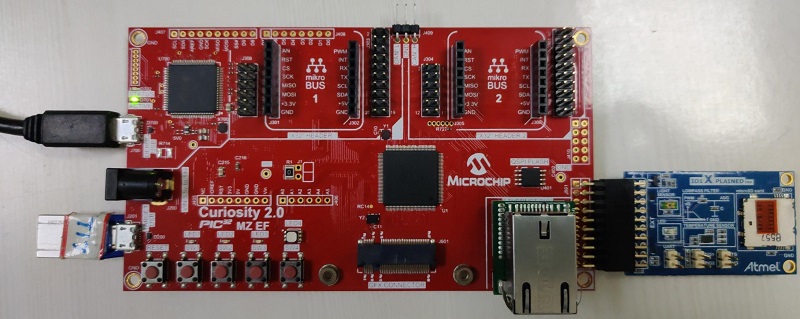
Programming hex file
The pre-built hex file can be programmed by following the below steps
- Open MPLAB X IDE
- Close all existing projects in IDE, if any project is opened.
- Go to File -> Import -> Hex/ELF File.
- In the Import Image File window,
- Create Prebuilt Project,
- Click the Browse button to select the prebuilt hex file.
- Select Device as PIC32MZ2048EFM144.
- Ensure the proper tool is selected under Hardware Tool and click on Next button.
- Select Project Name and Folder,
- Select appropriate project name and folder and click on Finish button
- Create Prebuilt Project,
- In MPLAB X IDE, click on Make and Program Device button to program the device.
- Follow the steps in Running the Demo section below.
Programming/Debugging Application Project
- Open the project (getting_started_middleware\firmware\middleware_drivers_freertos_pic32mz_ef_curiosity_v2.X) in MPLAB X IDE.
- Ensure Curiosity/Starter Kits (PKOB4) is selected as hardware tool to program/debug the application.
- Build the code and program the device by clicking on the Make and Program Device button in MPLAB X IDE tool bar.
- Follow the steps in Running the Demo section below.
Running the Demo
- Open the Tera Term terminal application on the PC (from the Windows Start menu by pressing the Start button).
- Change the baud rate to 115200.
- The user should see the temperature
values (in °F) being displayed on the terminal every 500 milliseconds, as shown
below.
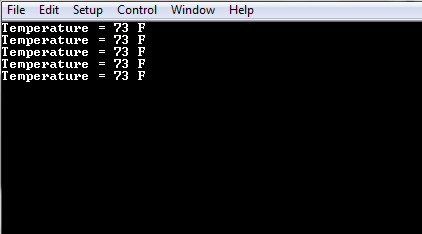
- Notice the LED1 blinking at a one second rate.
- Press any character on the terminal to
display the last five values written to the EEPROM.
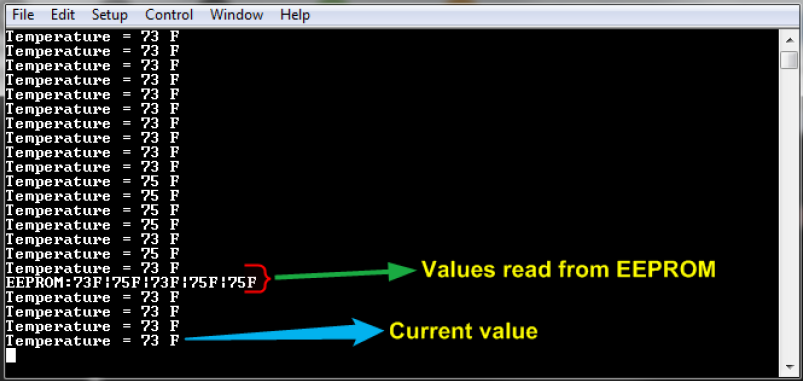
- The user should see the LED2 is in "ON"
state whenever the user connect a USB thumb drive and the application creates a text
file "Temperature_Sensor_Data.txt" if it is not already present in the USB thumb
drive.The latest room temperature samples are written to the text file at a one-second rate. To view the data in the text file, connect the USB Thumb drive to a PC USB port and open the Temperature_Sensor_Data.txt file.
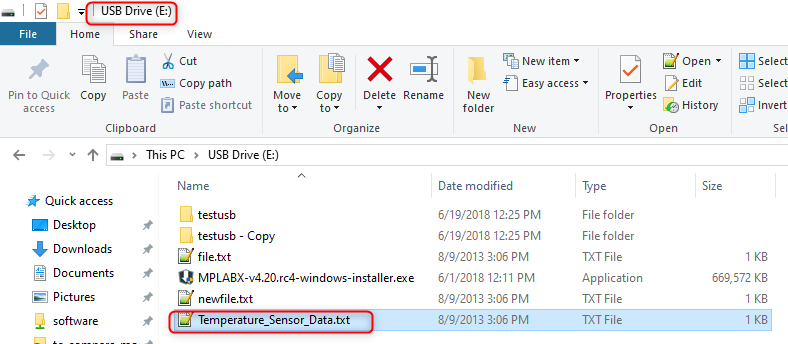
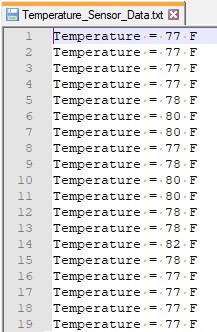
- The user may vary the temperature by
placing the finger on the temperature sensor (for a few seconds).
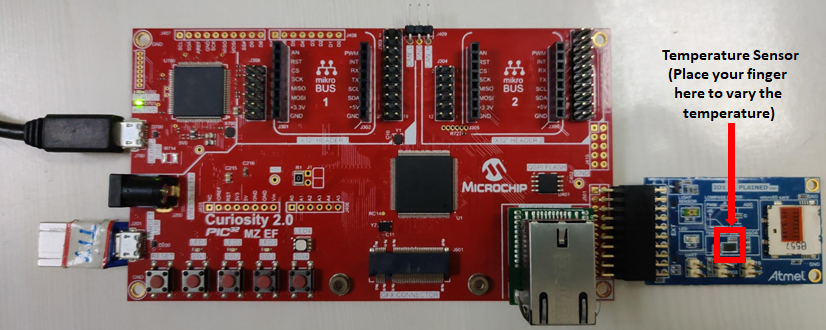
Comments
- Reference Training Module: Getting Started with Harmony v3 Drivers and Middleware on PIC32MZ EF MCUs using FreeRTOS
- This application demo builds and
works out of box by following the instructions above in "Running the Demo" section. If
the user needs to enhance/customize this application demo, the user needs to use the
MPLAB Harmony v3 Software framework. Refer links below to setup and build the
applications using MPLAB Harmony.
- How to Setup MPLAB Harmony v3 Software Development Framework (DS90003232)
- How to Build an Application by Adding a New PLIB, Driver, or Middleware to an Existing MPLAB Harmony v3 Project (DS90003253)
- Video - How to Set up the Tools Required to Get Started with MPLAB® Harmony v3 and MCC
- Create a new MPLAB Harmony v3 project using MCC
- Update and Configure an Existing MHC-based MPLAB Harmony v3 Project to MCC-based Project
